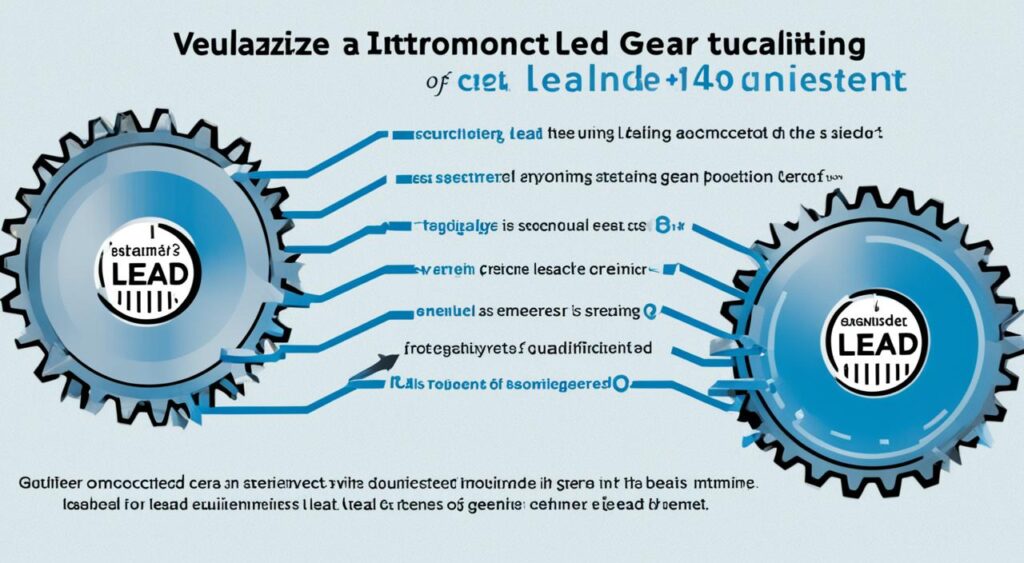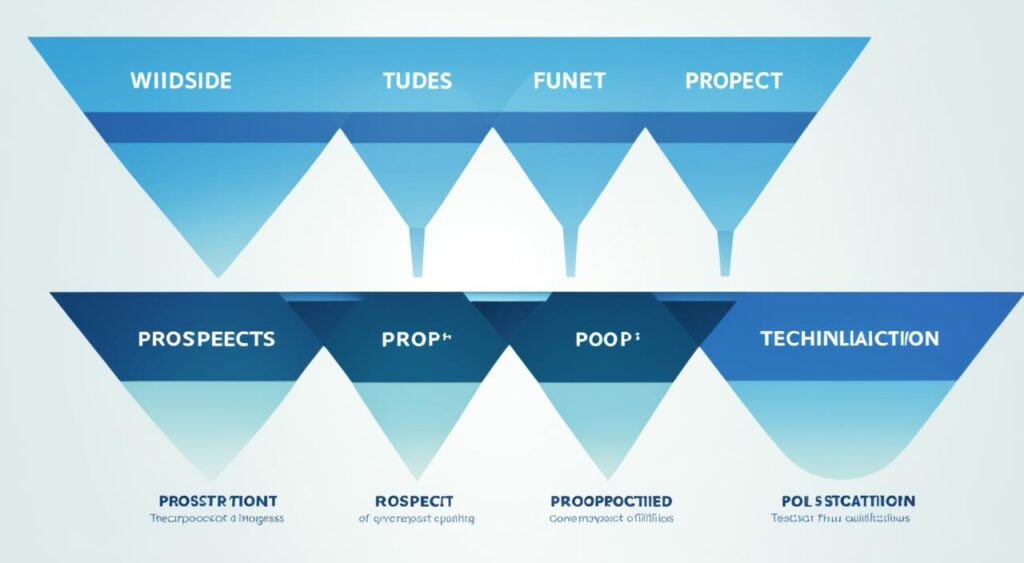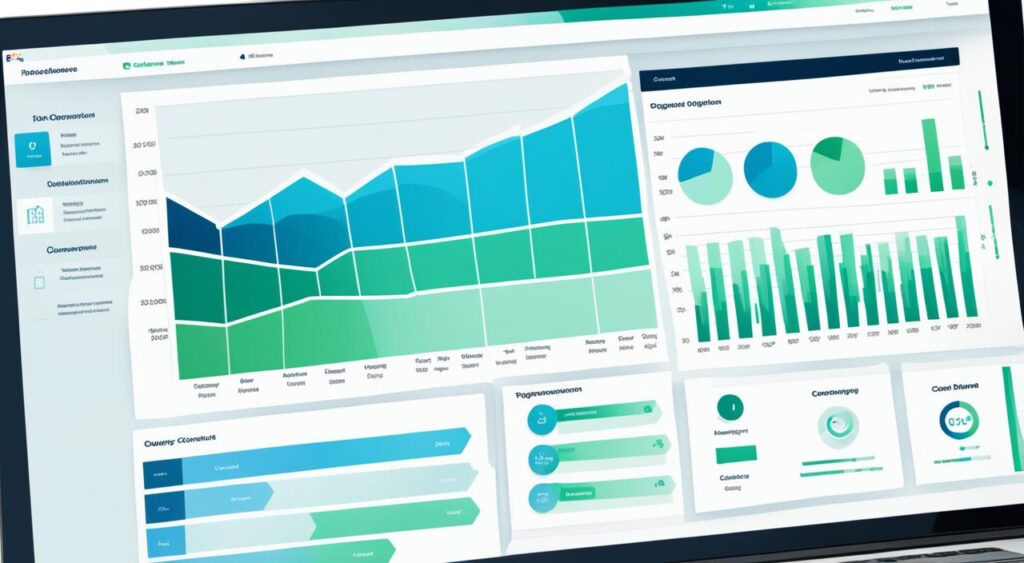What if the secret to unprecedented sales growth lies within understanding not just your product, but your prospects? Sales growth is an essential measure of success for any business, hinging significantly on the efficiency of lead generation and prospect qualification processes.
Effective prospect qualification involves assessing potential clients to determine the likelihood that they will purchase a product or service. This crucial approach allows businesses to focus their resources on high-potential leads, consequently reducing costs and increasing the probability of converting prospects into paying customers. By employing a thorough analysis of leads, considering factors such as their need for the product, budget, and decision-making power, companies can streamline their sales strategies for optimal outcomes.
Key Takeaways
- Sales growth is tightly linked to effective lead generation and prospect qualification processes.
- Properly qualifying prospects helps businesses focus on high-potential leads, reducing costs and improving conversion rates.
- A thorough analysis of leads includes assessing their need for the product, budget, and decision-making power.
- Employing efficient prospect qualification strategies enhances the likelihood of turning prospects into paying customers.
- Implementing these techniques results in streamlined sales strategies and optimized resource allocation.
Understanding Prospect Qualification
Prospect qualification is the process of determining which potential customers are worth pursuing by a sales team. It is an integral part of maximizing sales funnel efficiency. To understand prospect qualification, it is crucial to have a system of lead assessment in place, which often entails asking the right qualifying questions.

- Identifying Interests: Knowing what products or services the lead is interested in can help in tailoring the sales pitch.
- Budget Inquiry: Understanding the financial capability of a lead ensures that time is spent on high-potential customers.
- Decision-making Authority: Confirm whether the lead has the power to make purchase decisions or who else is involved in the process.
- Timeline Clarification: Determine when the lead intends to make a purchase to prioritize follow-up efforts.
Effectively qualifying prospects can prevent sales teams from spending time on leads that are unlikely to convert, ensuring better allocation of resources and an improved return on investment. Below is a comparison of common qualifying questions used in lead assessment:
| Qualifying Question | Purpose | Benefit |
|---|---|---|
| What is your primary need? | Identifies the lead’s pain point | Helps in crafting tailored solutions |
| What budget do you have allocated? | Assesses financial capability | Ensures lead affordability |
| Who else is involved in decision-making? | Determines decision-makers | Facilitates targeted communication |
| When are you planning to purchase? | Defines purchase timeline | Prioritizes follow-up actions |
The Importance of Ideal Customer Profiling
Ideal Customer Profiling is a strategic approach integral to understanding the target market and optimizing sales and marketing efforts. By leveraging customer insights, businesses can create comprehensive buyer personas that accurately reflect the characteristics, needs, and behaviors of their ideal customers. These personas serve as a foundation for targeted marketing campaigns, ensuring that companies connect more effectively with their intended audience.

An efficient profiling process involves analyzing existing customer data to identify patterns and trends. This analysis helps businesses gain actionable customer insights, allowing for better resource allocation and personalized engagement strategies. When buyer personas are well-defined, sales teams can tailor their approaches to meet the unique needs of each segment within the target market, resulting in higher conversion rates and improved customer retention.
Constructing detailed buyer personas entails examining various data points, including demographics, purchasing behavior, and feedback from current customers. These personas guide the creation of personalized messaging that resonates with the target audience, thereby enhancing the overall customer experience. Such targeted efforts not only attract potential customers but also foster loyalty among existing ones.
| Profiling Component | Description | Benefit |
|---|---|---|
| Buyer Demographics | Age, gender, occupation, income level | Tailored marketing messages |
| Purchasing Behavior | Past buying patterns and preferences | Personalized product recommendations |
| Customer Feedback | Reviews, surveys, direct communication | Improved product development |
Ultimately, incorporating Ideal Customer Profiling into business strategies ensures a deeper understanding of the target market. With accurate buyer personas, companies can design more effective marketing and sales tactics, leading to enhanced customer acquisition and retention.
Prospect Filtering: Techniques for Better Lead Management
Effective lead management is vital for any sales team aiming to optimize their sales efficiency. One of the most effective strategies includes prospect filtering, a technique used to sort through potential customers to identify those most likely to make a purchase. This process not only improves sales efficiency but also ensures that sales efforts are concentrated on the most promising leads.
Prospect filtering employs various methods to streamline qualifying leads, making it easier to focus on high-potential prospects. Common techniques include:
- Ranking leads based on predefined criteria
- Utilizing customer data to predict purchasing behavior
- Applying predictive analytics to foresee conversion probabilities
By implementing these techniques, businesses can significantly enhance their lead management processes. This, in turn, leads to greater sales efficiency, allowing sales teams to allocate their resources more effectively.
Below is a table that showcases some of the most popular prospect filtering techniques and their benefits:
| Technique | Description | Benefits |
|---|---|---|
| Lead Scoring | Assigns scores to leads based on various factors like engagement and fit | Helps prioritize high-potential leads |
| Behavioral Analysis | Examines past behaviors and actions to predict future buying actions | Improves accuracy in targeting the right prospects |
| Predictive Analytics | Uses data and statistical algorithms to identify patterns and predict outcomes | Enhances decision-making with data-driven insights |
In conclusion, integrating effective prospect filtering techniques into lead management practices not only streamlines the process of qualifying leads but also elevates the overall efficiency of sales operations.

Steps in the Lead Qualification Process
The lead qualification process is essential for guiding potential customers through the sales process, ensuring that each step is meticulously handled to convert interest into action. This series of steps involves a strategic approach to identify and nurture prospects effectively.

Initial Contact
The initial contact stage is where the sales representative makes the first connection with the potential customer. This step focuses on establishing a relationship and gaining permission to continue the conversation. Engaging prospects at this point is crucial as it sets the tone for future interactions. Effective communication and active listening play pivotal roles in making a positive first impression.
Needs Assessment
During the needs assessment, sales representatives delve deeper into the prospect’s specific requirements. This involves asking targeted questions to better understand the customer’s challenges and goals. Evaluating needs thoroughly at this stage helps to tailor solutions that align with the prospect’s expectations. It’s essential to gather detailed information to form the foundation for a compelling proposal.
Solution Proposal
The solution proposal stage is where the sales professional presents a customized offering that addresses the identified needs of the prospect. This is about showcasing how the proposed solution fits into the prospect’s business context and solves their challenges effectively. Crafting a well-thought-out proposal not only demonstrates a deep understanding of the prospect’s requirements but also underscores the value of the solution, thereby driving the sales process forward.
Key Metrics for Prospect Evaluation Techniques
The effectiveness of prospect evaluation techniques is gauged using various key metrics. One of the most insightful metrics is conversion rates, which show the proportion of qualified leads that turn into paying customers. By analyzing these rates, sales teams can better understand their lead prioritization and project future sales outcomes.

Other critical sales metrics include lead response time, engagement levels, and the average cost per lead. Lead response time measures how quickly leads are contacted after expressing interest, impacting the likelihood of conversion. Engagement levels indicate the interaction between leads and your content, such as email opens, website visits, and social media interactions.
To refine their qualification efforts, sales teams should also monitor metrics like the average cost per lead, providing insights into how resources are allocated and optimizing outreach strategies.
By leveraging these key metrics, sales teams can fine-tune their prospect evaluation techniques, ensuring a more targeted and efficient approach to lead management and ultimately improving conversion rates.
- Conversion rates
- Lead response time
- Engagement levels
- Average cost per lead
These metrics not only help in lead prioritization but also provide a framework for continuous improvement in sales approaches.
Effective Prospect Qualification Strategies
Effective prospect qualification strategies are crucial for a robust conversion strategy. By enhancing lead quality through comprehensive lead analysis and predictive scoring, businesses can ensure better customer engagement.

One key approach involves conducting a thorough analysis of leads. This ensures that only high-quality leads proceed through the sales pipeline, which conserves resources and improves efficiency. Predictive scoring plays a pivotal role in this process by using historical data to forecast the likelihood of a lead converting into a customer.
Another essential tactic is personalized follow-up communications. These tailored interactions help maintain and enhance customer engagement, addressing specific needs and pain points of the leads. Recognizing key sales triggers and aligning sales tactics accordingly also significantly boosts the effectiveness of these strategies.
Finally, nurturing leads throughout the sales pipeline requires consistent and strategic interactions. This approach not only improves lead quality but also ensures a seamless transition from prospect to loyal customer, thereby optimizing the entire conversion strategy.
Customer Prospecting Strategies for Modern Sales Teams
In today’s competitive marketplace, modern sales teams must adopt a range of customer prospecting strategies to effectively connect with potential leads. Among the most impactful are leveraging social media channels and executing well-structured email campaigns. Each of these tactics plays a crucial role in enhancing engagement and driving conversions.
Leveraging Social Media
Social selling represents a transformative approach to customer prospecting. By utilizing platforms such as LinkedIn, Twitter, and Facebook, sales professionals can tap into vast networks, share insightful content, and engage with prospects in meaningful ways. The capability to build relationships and establish credibility through social media interactions is unparalleled. Sales teams can identify key prospects, join relevant conversations, and provide value that resonates with potential customers.

Email Campaigns
Email marketing continues to be a cornerstone of effective prospecting tactics. Targeted email campaigns allow sales teams to deliver personalized messages that address specific needs and pain points of potential customers. By crafting compelling content and strategically scheduling email sends, businesses can nurture leads through the sales funnel. This method not only keeps prospects informed but also fosters a sense of trust and reliability.
The prospecting landscape is continuously evolving with advancements in technology and changing consumer behavior. To stay ahead, sales teams must remain adaptive and innovative, leveraging both social selling and email marketing to maximize their outreach and conversion efforts.
The Role of Lead Scoring Methods
Lead scoring methods are pivotal for businesses aiming to excel in prioritizing leads and refining their sales targeting strategies. By utilizing various lead scoring methods, companies can ensure a more accurate lead quality assessment, thereby enhancing conversion rates.

Behavioral Scoring
Behavioral Scoring focuses on evaluating a lead’s interaction with a company’s marketing activities and digital content. This method assesses behaviors such as website visits, email opens, and content downloads to determine a lead’s interest level and readiness to purchase.
Demographic Scoring
Demographic Scoring takes into account individual characteristics of a lead such as age, occupation, and income level. By analyzing these attributes, businesses can tailor their sales targeting efforts more effectively to match the profile of their ideal customer.
Firmographic Scoring
Firmographic Scoring is particularly valuable in B2B sales, where understanding an organization’s attributes like company size, industry, and revenue is critical. This approach allows businesses to focus their sales efforts on leads that exhibit the highest potential for conversion based on firmographic data.
How Targeted Audience Segmentation Increases Sales Revenue
Targeted audience segmentation is a powerful strategy that involves dividing a business’s market into distinct subsets of customers with similar needs or characteristics. This approach allows companies to focus on personalized marketing efforts, addressing specific concerns and preferences of different groups more effectively. As a result, businesses can achieve higher engagement and improved sales conversion rates.

By employing market segmentation, companies can tailor their products, services, and marketing efforts to meet the distinct needs of each segment. This not only enhances customer satisfaction but also significantly boosts sales revenue. Personalized marketing enables firms to create targeted campaigns that resonate deeply with their audience, fostering stronger customer relationships and leading to increased sales conversion.
Moreover, segmentation provides a competitive advantage by allowing businesses to deliver more value to their customers. Companies can utilize various criteria for segmentation, such as demographic, psychographic, behavioral, and geographic factors. This ensures each segment receives relevant and compelling marketing messages that drive engagement and result in higher sales conversion.
Ultimately, targeted audience segmentation equips businesses with the insights needed to craft effective marketing strategies, personalize customer interactions, and optimize their efforts to achieve maximum sales revenue. By leveraging this approach, companies can ensure that they are meeting the unique needs of their diverse customer base.
The Process of Qualified Lead Identification
The process of qualified lead identification is essential for any successful sales strategy. It involves several key steps to ensure a lead is ready and able to make a purchase, thus becoming a viable sales opportunity.
Lead validation is the initial step, which includes verifying the lead’s contact information. Ensuring the accuracy of this data is crucial for effective follow-up and communication. Equally important is assessing the lead source credibility, which helps determine the reliability of the lead and its potential to convert into a customer.

Identifying key buying signals is another critical component in the process. These signals indicate the readiness of the lead to engage in the purchasing process, thereby highlighting a genuine sales opportunity. Recognizing these signals can significantly enhance the effectiveness of sales pitches and proposals.
These procedures collectively boost the efficacy of customer acquisition efforts. By focusing on leads that are more likely to result in a successful transaction, businesses can optimize their sales strategies and resource allocation, ultimately driving better outcomes.
| Step | Description |
|---|---|
| Lead Validation | Verifying contact information and assessing source credibility |
| Buying Signals Identification | Recognizing readiness indicators for purchasing |
Common Challenges in Prospect Qualification
Companies frequently encounter significant hurdles in the process of qualifying prospects, which can hinder effective sales efforts. Identifying decision makers and understanding buyer intent are primary challenges that sales teams must address to ensure fruitful outcomes.

Identifying Decision Makers
One of the foremost obstacles in prospect qualification is pinpointing the real decision makers within a company. Knowing who holds the purchasing authority is crucial in streamlining the decision-making process. Sales teams often grapple with numerous gatekeepers, and overcoming these sales obstacles requires a strategic approach that includes thorough research and networking.
Understanding Buyer Intent
Equally important is comprehending the buyer’s intent signals. Recognizing these signals involves careful analysis of a prospect’s actions and engagement levels. Successfully interpreting these indicators can significantly enhance the efficiency of the qualification process. Those who master this skill are in a better position to tailor their engagements, addressing specific needs and speeding up the decision-making process.
Technological Innovations in Prospect Qualification
Technological innovations are revolutionizing the approach to prospect qualification, with tools such as CRM software, Artificial Intelligence (AI), and sales automation leading the charge. These advancements allow sales teams to efficiently manage vast amounts of customer data, automate repetitive tasks, and extract valuable insights through advanced data analysis.

AI in sales is particularly noteworthy, offering capabilities like predictive analytics, which helps in anticipating customer behaviors and needs. Through lead scoring mechanisms, AI can prioritize potential prospects, ensuring that sales efforts are focused on the most promising opportunities. This not only boosts sales effectiveness but also contributes to more meaningful customer interactions.
Sales automation tools further streamline the qualification process by handling routine tasks such as follow-ups, data entry, and initial outreach. These tools free up valuable time for sales teams, allowing them to concentrate on engaging with leads and closing deals. The integration of CRM software ensures a seamless flow of information, providing a comprehensive view of each customer and facilitating personalized communication.
Overall, the incorporation of CRM software, AI in sales, and sales automation into the prospect qualification process significantly enhances efficiency and accuracy, leading to better sales outcomes and a competitive edge in the market.
Integrating Prospect Qualification with Sales Strategies
Achieving a seamless integration of prospect qualification with a strategic sales approach is crucial for a successful sales cycle. This alignment ensures resources are focused on the most promising leads, enhancing overall sales performance and efficiency.
Incorporating CRM integration into this process allows for a consolidated view, bridging the gap between marketing and sales teams. This unified perspective facilitates real-time insights and a comprehensive understanding of customer interactions, improving the decision-making process.
“By aligning prospect qualification with strategic sales approach, businesses can significantly enhance their sales cycle optimization, ensuring that no potential sales opportunities are missed.” – Forbes Insights
A closer look at the benefits of integrating these elements reveals a positive impact on sales metrics, making it an essential strategy for any forward-thinking sales team:

| Aspect | Benefits |
|---|---|
| Strategic Sales Approach | Focused efforts on high-potential leads, aligning sales efforts with business goals. |
| CRM Integration | Seamless data flow between departments, providing a 360-degree view of customers. |
| Sales Cycle Optimization | Enhanced efficiency and reduced sales cycle times, improving conversion rates. |
Integrating prospect qualification with strategic sales approach positions businesses to capitalize on their qualification efforts. Implementing CRM integration further streamlines processes and promotes sales cycle optimization, ultimately driving better results.
Conclusion
Effective prospect qualification is critical for achieving sales success and driving revenue in today’s competitive business landscape. By implementing a robust set of strategies, including ideal customer profiling, targeted audience segmentation, and leveraging advanced technologies like AI and CRM systems, businesses can optimize their sales processes to focus on the most promising leads. These methods not only ensure the efficient allocation of resources but also significantly enhance the likelihood of converting high-quality leads into loyal customers.
As the market continues to evolve, it is imperative for sales organizations to stay informed about the latest trends and techniques in prospect qualification. Continuous learning and adaptation will enable businesses to maintain a competitive edge, ultimately resulting in higher sales success and sustainable growth. Employing effective qualification strategies allows companies to better understand their prospects’ needs, personalize their sales approaches, and create meaningful engagements that drive revenue.
In conclusion, the importance of effective prospect qualification cannot be overstated. It is a foundational element that underpins the entire sales cycle, from lead generation to closing deals. By integrating these qualification techniques with strategic sales approaches, businesses can ensure a streamlined process that maximizes both efficiency and outcomes. Investing in comprehensive qualification practices is not merely an option but a necessity for any organization aiming to thrive and succeed in today’s dynamic market environment.
FAQ
What is Effective Prospect Qualification?
Effective Prospect Qualification involves assessing potential clients to determine the likelihood that they will purchase a product or service. This approach helps businesses focus their resources on high-potential leads, thereby reducing costs and increasing the chance of converting prospects into paying customers.
How does Ideal Customer Profiling benefit a business?
Ideal Customer Profiling involves creating detailed descriptions of the typical buyers who are likely to benefit from a company’s offerings. It helps in guiding sales and marketing efforts, ensuring that the target market is engaged with personalized and relevant messaging, significantly enhancing customer acquisition and retention.
What are some techniques used for Prospect Filtering?
Techniques used in Prospect Filtering include ranking leads based on predefined criteria, utilizing customer data to predict purchasing behavior, and applying predictive analytics. These methods streamline the process of sorting through potential customers and identifying which ones are most likely to make a purchase.
Can you outline the steps in the Lead Qualification Process?
The Lead Qualification Process typically involves three main steps: 1. Initial Contact: Making a connection with the potential customer and obtaining permission to engage. 2. Needs Assessment: Asking targeted questions to evaluate the prospect’s specific requirements and challenges. 3. Solution Proposal: Presenting a customized offering that addresses the identified needs, positioning it as the best solution for the prospect.
What key metrics are used in Prospect Evaluation Techniques?
Key Metrics used in Prospect Evaluation include conversion rates, lead response time, engagement levels, and the average cost per lead. These metrics help sales teams refine their qualification efforts and better target their outreach strategies.
What are some effective Prospect Qualification Strategies?
Effective Prospect Qualification Strategies involve comprehensive lead analysis, predictive scoring, and personalized follow-up communications. Recognizing key sales triggers and aligning sales tactics accordingly also play a crucial part in nurturing leads effectively through the sales pipeline.
How do modern sales teams use Customer Prospecting Strategies?
Modern sales teams often leverage social media for social selling, allowing them to engage with prospects directly and share valuable content. Email campaigns are also a critical tactic, offering targeted messaging to warm up leads with insights and solutions.
What are Lead Scoring Methods and how are they used?
Lead Scoring Methods include Behavioral Scoring, which evaluates a lead’s engagement level, Demographic Scoring, which considers individual attributes like age and occupation, and Firmographic Scoring, which assesses company-based factors for B2B sales. These methods help in prioritizing leads and refining sales targeting efforts.
How does Targeted Audience Segmentation increase sales revenue?
Targeted Audience Segmentation involves dividing the market into subsets with similar needs or characteristics and tailoring marketing efforts for each segment. This personalized approach leads to higher engagement and sales conversion, ultimately increasing sales revenue.
What is the Process of Qualified Lead Identification?
The Process of Qualified Lead Identification includes verifying contact information, assessing lead source credibility, and identifying key buying signals. It focuses sales efforts on leads most likely to result in a successful transaction, enhancing customer acquisition initiatives.
What are common challenges in Prospect Qualification?
Common challenges in Prospect Qualification include Identifying Decision Makers within an organization to ensure discussions are directed at those with purchasing authority, and Understanding Buyer Intent by deciphering behavioral cues and intent signals that indicate a prospect’s readiness to buy.
How are technological innovations impacting Prospect Qualification?
Technological innovations such as CRM software, Artificial Intelligence (AI), and sales automation tools are transforming Prospect Qualification. These technologies enable detailed customer data collection, task automation, and data-driven insights, enhancing the efficiency and accuracy of the qualification process.
Why is integrating Prospect Qualification with Sales Strategies important?
Integrating Prospect Qualification with Sales Strategies ensures a cohesive approach to sales by aligning qualification criteria with strategic sales efforts. CRM integration provides a seamless flow of information between marketing and sales, optimizing the sales cycle and preventing potential sales opportunities from being overlooked.







